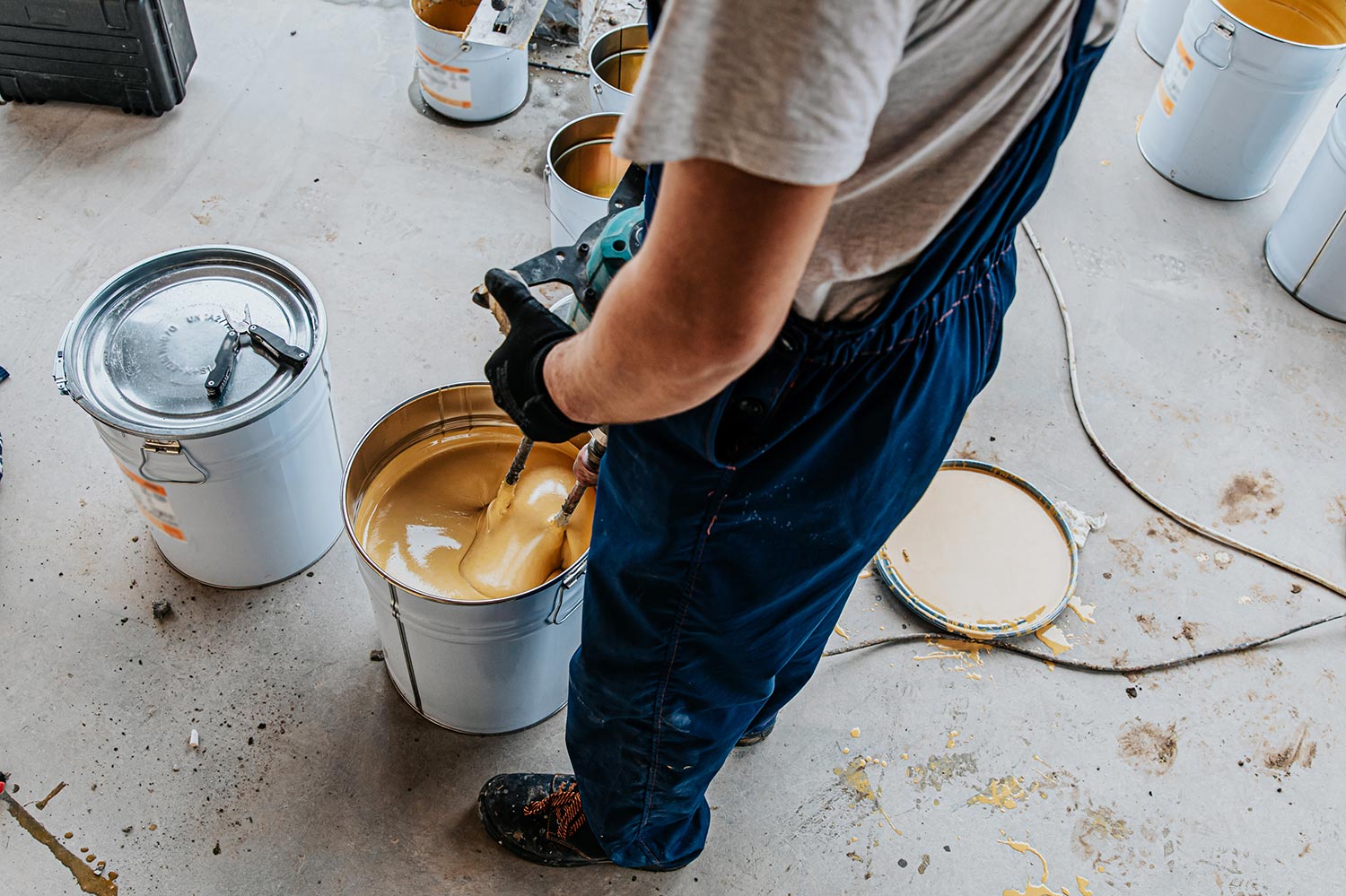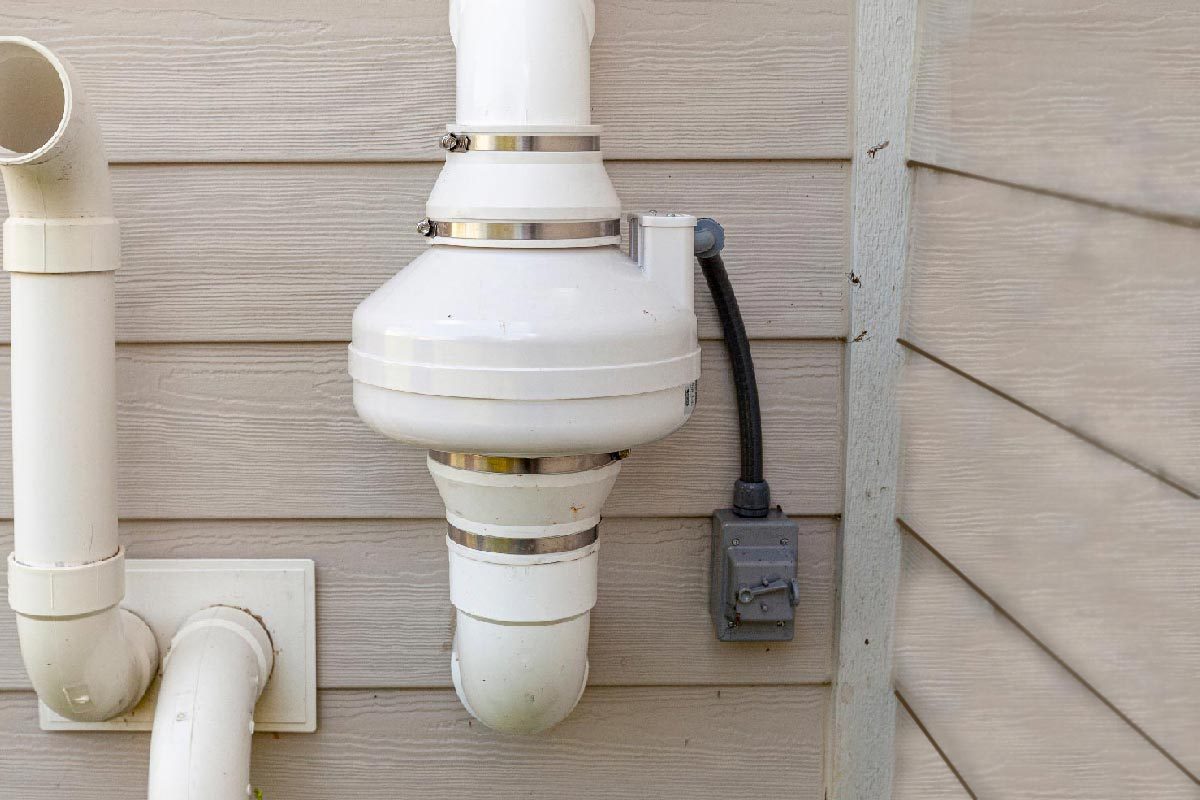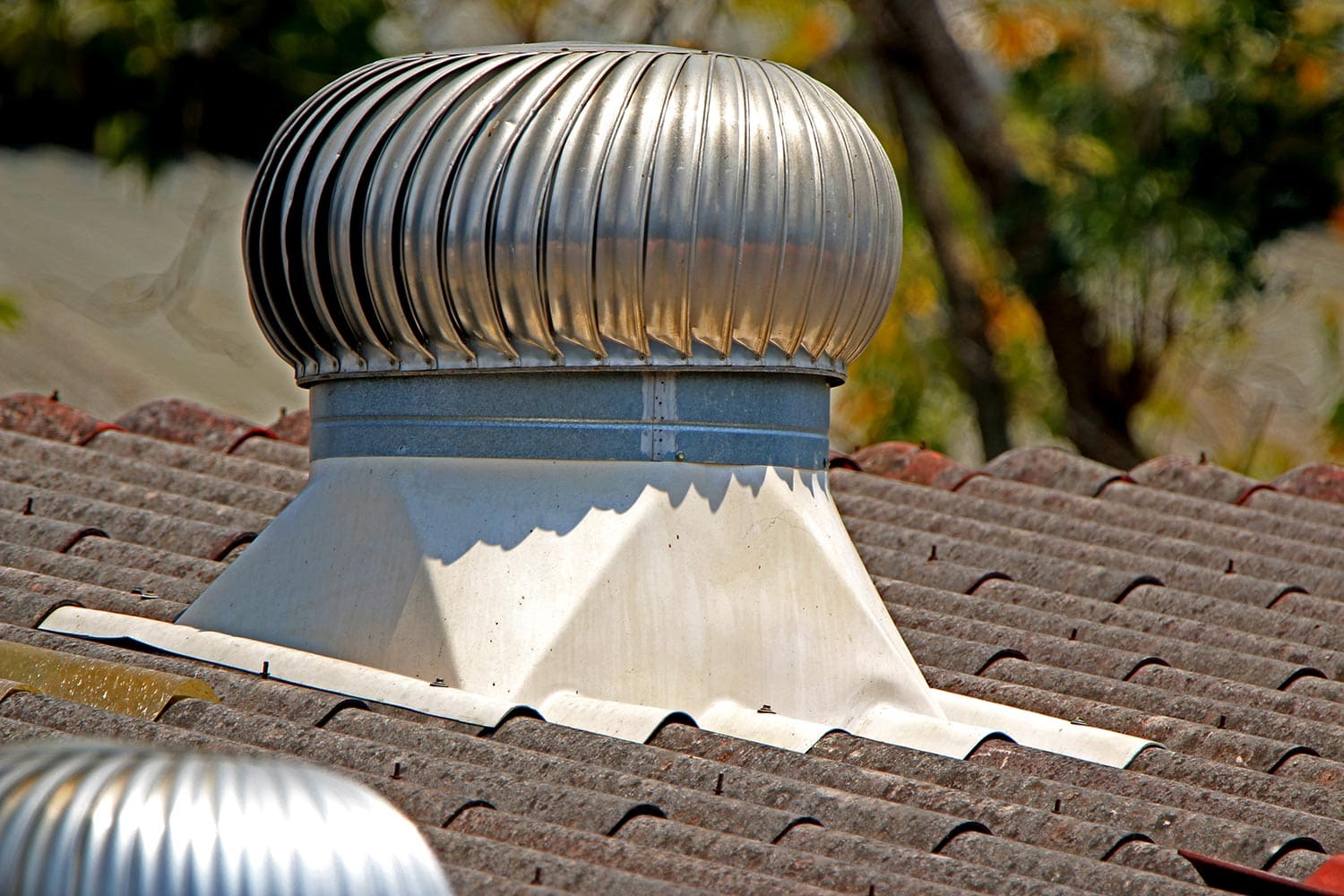One way to reduce radon levels is to install a radon pipe through your vents, which is simply a pipe that vents the gas outdoors. But what if your home already has a radon pipe installed? Can you paint it? Fortunately, we did some research to reveal the answer to this question.
Pipe painting might not be the first thing that comes to mind when you think of home improvement projects, but it can be a great way to improve the look of your home and protect your pipes from corrosion. To prepare and do this project, here are the steps to remember:
- Choose a day when the weather is dry and mild
- Clean and scrub the pipe
- Apply primer
- Begin painting
- Apply a second-coating
In this blog post, we'll explore how to paint your radon pipe and other important tips for protecting your plumbing. Read on to learn more about the guide on painting your radon pipe.
![PVC radon vent pipe attached to the side of a house, Can You Paint A Radon Pipe? [And How To]](https://hvacseer.com/wp-content/uploads/2022/07/Can-You-Paint-A-Radon-Pipe-And-How-To.png)
Is It Necessary to Paint a Radon Pipe?
Radon is a naturally occurring radioactive gas that can be found in the soil, rock, and water of the earth. Although it is not harmful in small amounts, exposure to high radon levels can lead to lung cancer. As a result, many homeowners take steps to reduce their exposure to radon by installing a ventilation system that directs the gas outside of the home.
One key part of this system is the radon pipe, which is typically made of plastic or PVC. While the material of the pipe does not affect its function, many homeowners choose to paint their radon pipe to blend in with their home's exteriors.
Others simply enjoy the opportunity to add a splash of color to an otherwise mundane object. Ultimately, whether or not to paint a radon pipe is a matter of personal preference.
It's a good idea to give the pipe a coat of paint. This will help to protect it from the elements and extend its life. Additionally, painting the pipe will make it easier to spot any leaks.
So, if you're not sure whether or not to paint your radon pipe, err on the side of caution and give it a coat of paint. It can't hurt, and it might just save you money in the long run.
What Kind of Paint Should Be Used on a Radon Pipe?

If you're painting a radon pipe, you'll want to use epoxy-based paint. This type of paint is specifically designed to resist the corrosive effects of radon gas. It's also important to choose light-colored paint, as this will help reflect radon gas away from the surface of the pipe.
Finally, make sure to use a brush or roller with a textured surface, as this will help the paint to adhere more securely to the pipe. With these tips in mind, you'll be able to choose the best paint for your radon pipe.
How to Paint Your Radon Pipe?

If you have a radon pipe sticking out of your foundation, it's important to seal it properly to prevent the gas from seeping into your home. This will create a barrier that will help to keep radon out. Here are the steps to do it:
1. Choose Dry Mild Forecast

Painting your radon pipe is a great way to improve the look of your home while also protecting the pipe from the elements. The best time to paint the pipe is on a day when the weather is dry and mild. This will help ensure that the paint adheres properly and dries quickly.
2. Clean and Scrub the Pipe
Before you start painting, clean the pipe with soapy water and a stiff brush. This will help the paint to adhere better. Rinse the pipe off with clean water and leave it to dry completely.
3. Apply Primer
Once the pipe is dry, apply a coat of primer (if using). This will help the paint to stick and will also prevent rusting.
4. Begin Painting
Now you can start painting! Apply your chosen paint evenly, using a brush or roller. If you’re using spray paint, make sure to hold the can at least 30cm away from the surface of the pipe.
5. Apply a Second-coating
Leave the first coat of paint to dry completely before applying a second coat. If you’re using a light-colored paint, you may need to apply a third coat for even coverage. Once your final coat of paint is dry, your radon pipe is ready for use!
With just a few minutes of work, you can help to protect your family from potentially deadly dangers.
What Are the Dangers of Not Painting a Radon Pipe?
One of the dangers of not painting a radon pipe is that the pipe will be more likely to corrode. This is because the paint acts as a barrier between the pipe and the air, preventing moisture and oxygen from reaching the metal. Without this protection, the pipe will begin to rust and deteriorate, eventually causing it to fail.
In addition, paint helps to reflect heat, protecting the pipe from excessive temperatures. Without this thermal protection, the pipe would be susceptible to extreme heat or cold damage.
Finally, paint provides a degree of protection from ultraviolet light, which can degrade the pipe material over time.
For all these reasons, it is important to ensure that any radon pipes are properly painted to extend their lifespan and prevent potential damage.
What Are the Health Risks Associated With Radon?
Radon is a naturally occurring gas in all types of rocks and soil. When rocks and soil break down, radon is released into the air. In small amounts, radon is not harmful. However, when radon accumulates in enclosed spaces, it can pose a serious health risk.
Prolonged radon exposure can cause lung cancer, and it is estimated that radon gas is responsible for thousands of deaths each year. There are no symptoms of radon poisoning, so it is important to have your home tested for radon gas if you live in an area where Radon levels are known to be high.

If you do find high levels of Radon in your home, there are various mitigation strategies that can be employed to reduce the risk to your health.
What Are Some Other Methods Homeowners Can Use to Reduce the Amount of Radon Gas in Their Home?
In addition to installing a radon mitigation system, homeowners can take several other measures to reduce the level of radon gas in their home.
- One option is to seal any cracks and openings in the foundation, which can help to prevent radon gas from seeping into the home.
- Homeowners can also install a sub-slab depressurization system, which helps to create negative pressure beneath the foundation and keep radon gas from entering the home.
- Another option is to install an exhaust fan in the attic or crawl space, which can help to remove radon gas from these areas before it has a chance to enter the home.

By taking these steps, homeowners can significantly reduce the level of radon gas in their homes.
How Can You Tell if You Have a Radon Problem in Your Home?
Radon is a gas that is released from the decomposition of uranium in the soil. Although it is present in outdoor air, it can be concentrated in homes and other buildings when it seeps in through cracks in the foundation.
Radon is odorless and colorless, so the only way to know if it is present is to test for it. If you are concerned about radon exposure, there are kits available at hardware stores that you can use to test levels in your home.
But, the most reliable way to test for radon is to hire a certified professional. Radon testing typically takes place over several days, and results can be available within a week.

If radon levels in your home are found to be high, there are ways to mitigate the problem, such as sealing cracks in the foundation and increasing ventilation. Yet, the best way to protect yourself and your family from radon exposure is to have your home tested on a regular basis.
Final Words
Painting your radon pipe is a great option if you're looking for an easy and affordable way to reduce your radon levels. Just be sure to follow the proper steps so that you get the best results possible. Feel free to call experts today and let them help you take care of the problem.
To get more tips on preparing your home ventilation, see our posts below:
Which Way Does An Air Filter Go In The Ceiling?


When describing how to paint the pipe and protecting it why do you refer to it as metal PVC pipe is definitely not mobile